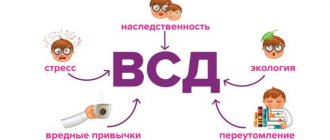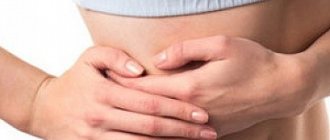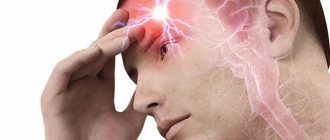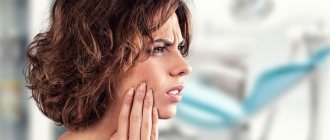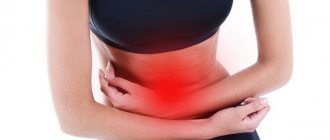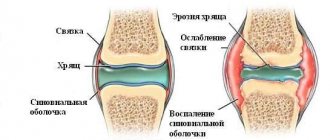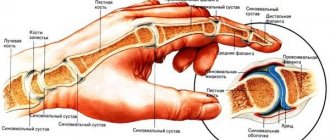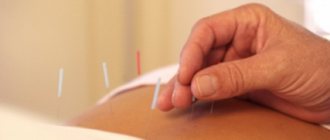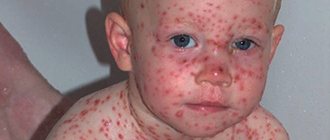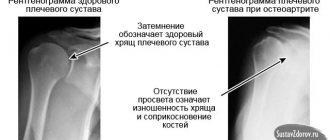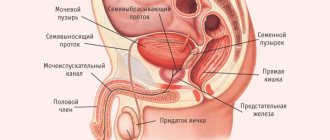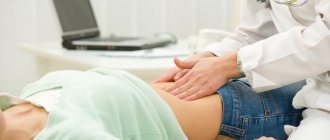Every fifth adult in Russia lives with migraine. However, most of these people are unaware of their diagnosis - they take painkillers and attribute headaches with nausea to “magnetic storms” or poisoning.
Why patients suffer for years without knowing about their diagnosis, what misconceptions about migraine are common among patients and doctors, and when you need to see a neurologist instead of taking pills, “Things like this” learned at the conference “Headache Treatment: Theory and Practice.”
Photo: pxhere.com
Types of reasons
“My head hurts,” we say and habitually reach for a painkiller. Sometimes the headache quickly passes, and we forget about what hurt. But it happens that other treatment methods are required. In addition, if you have a headache, this may be a signal that something is wrong in the body.
So what exactly is it that hurts when you have a headache? In general, all the numerous reasons for the occurrence of this pain are usually divided into two groups.
Pressure on the tissues and vessels of the head
Very often, headaches occur with changes in blood pressure (hypotension, hypertension, changes as a reaction to atmospheric phenomena, etc.), and with certain diseases, including:
- sinusitis;
- tumors;
- inflammation in the membranes of the brain;
- vascular spasms that occur with migraine, vegetative-vascular dystonia;
- when exposed to external factors, including carbon monoxide poisoning, lack of oxygen, etc.;
- poisoning - this can also be intoxication from the use of low-quality food, the presence of viruses in the body (an example of such a headache is with the flu).
Damage to the nerve centers of the head
This includes damage to the centers in the head caused by a stroke or injury, as well as various neuralgia, including cranial nerves. This group also includes such a common problem as osteochondrosis of the cervical spine.
Very often two different reasons become interconnected. Thus, banal osteochondrosis can affect the nerves and not only cause pain in the head, but also lead to organ damage - in this case, we are talking first about nerve compression, then about a decrease in the lumen of blood vessels, and then about problems with blood pressure.
Primary types of headaches
Tension pain or tension headache – it’s all about stress!
This is the most common type and occurs in 9 out of 10 people. In this case, there is a feeling of fullness, tension or tightening of the upper part of the head (“Hoop”). Often a person compares the condition to being in a helmet. This symptom is so characteristic that it is called the “neurasthenic helmet” (since headaches of this type are associated with neuroses). In mild form, pain appears only occasionally, and after rest there is improvement. If a person experiences pain more than 15 days a month, we are talking about a chronic course.
Main features. As a rule, these pains are mild or moderate, but the sensations become more intense in the evening, the duration of manifestations varies from half an hour to several days. In addition, a person is worried about increased fatigue, sleep disturbance, and a possible sensation of a lump in the throat.
Causes: overstrain of the muscles of the face, eyes, neck, back. The situation is aggravated by stressful situations (at work, when taking exams, etc.), lack of proper rest, lack of sleep, stuffy rooms, heat or cold, abuse of analgesics or psychostimulants (including caffeine), as well as irregular nutrition or fasting . In addition, hormonal disorders can provoke pain.
How to treat this type of headache? In this case, malaise is the body’s protective reaction to overexertion. Adequate physical activity, walks in the fresh air, massage, and simply kneading the neck and shoulders will certainly bring relief. It’s a good idea to learn how to reduce stress; playing sports, meeting with friends, traveling, hobbies - everyone can choose the most appropriate way! For severe pain, painkillers are effective; in some cases, antidepressants can be used.
Migraine – treat? Try to prevent it!
Perhaps this is the most mysterious phenomenon, which has been the subject of debate among doctors for centuries.
Main features . Exhausting, lasting for hours, or even days, practically unresponsive to medication, intense pain is concentrated in one half of the head, focused in the area of the eye, forehead or temple. In this case, irritability and a feeling of fatigue are combined with photosensitivity, hypersensitivity to loud sounds, and aversion to various odors. The person experiences dizziness, nausea, and problems concentrating.
Often, a couple of days before the attack, visual, olfactory or tactile abnormalities appear: a person sees bright elements, smells or tingles throughout the body.
Causes of occurrence. There are several hypotheses for the occurrence of migraine: the leading one today is a violation of vascular tone. A number of factors can provoke the condition:
- stress (
How to diagnose the cause of pain?
If you have a headache, then in itself it is not so scary; four out of five people feel it to varying degrees, and periodically. But if it continues for a long period and occurs periodically, then you will need to undergo a comprehensive examination. To simplify the diagnostic procedure, such technical means as magnetic resonance and computed tomography of the brain and angiography are used today. To detect hidden hypertension, doctors use blood pressure monitoring. To identify inflammation and hidden infections, laboratory tests are prescribed. Consultations with an ophthalmologist and other specialized specialists help to more accurately determine the nature and cause.
Why does my head hurt and where does the headache lie?
Pain in temples
Temporal pain can be caused by a number of reasons, including sudden changes in blood pressure, intoxication or infection.
Pain in the back of the head can be bothersome due to cervical osteochondrosis, increased muscle tone in the cervical region, or hypertension.
A headache in the forehead area can be very dangerous, because it can be caused by inflammatory diseases, increased intracranial pressure, and pinching of the occipital nerve. The cause of such pain can also be pneumonia, meningitis or malaria.
Pain in the eye area can be a symptom of migraine and a number of eye diseases, including, for example, glaucoma. It is worth noting that sometimes headaches can occur due to overexertion and stress. To get rid of this pain, you just need to remove the factors that provoke emotional surges from your life.
The headache can be severe, prolonged, sharp and throbbing.
Reason 10. Myocardial infarction
Symptoms of myocardial infarction
Pain in the arm during myocardial infarction is characterized by the following symptoms:
- acute persistent pain that radiates from the center of the chest to the left arm;
- nausea;
- shortness of breath (dyspnea).
What can be done in case of myocardial infarction?
Call the ambulance service or your doctor immediately!
Other features of the disorder
For preventive purposes, various medications, therapeutic exercises, dietary changes, relaxation techniques, and herbal therapy can be used.
Prevention and relief for headaches
There is a ban on certain products and procedures if you have a constant headache:
- Sausages may contain increased amounts of nitrites - dyes that give the product a pleasant pinkish color, and artificial flavors.
- Chewing gum, chocolate, sweet soda, some types of sweets - the substance phenylethylamine.
- Sugar substitutes, such as aspartame and additive E 961, can provoke headaches. They are found in soda, yogurt, low-calorie desserts, candy, cough drops and vitamins.
- Cheese, red wine, smoked fish, nuts, chicken liver - amino acid tyramine.
- Spices, soy - vegetable protein monosodoglutamate.
- Alcohol. After a small dose, the discomfort may subside and disappear, but it may return later. What if you suffer from cephalalgia all the time?
- Smoking. Nicotine spasms muscles.
- Taking large amounts of painkillers.
- Cold. Ice compresses and washing will not give anything other than additional vasospasm and muscle tension.
If you have not yet been able to find out the reasons for your frequent torment, try to help yourself and somehow alleviate the attacks with the following harmless means:
- Fresh air. Regular walks and frequent ventilation of the room will supply the body with oxygen.
- Herbal decoctions. Brew some lavender or chamomile and drink it as tea. After this, try to sleep.
- Compress. Add a few drops of mint or lavender essential oil to warm or slightly cool water, whichever you prefer. Then wet a towel or piece of cloth and apply it to your forehead and temples for a while.
- Self-massage. Lower your head slightly, massage with your fingertips, moving from the forehead to the back of the head. Walk through each area several times. It would also be a good idea to massage your neck and ears.
Treatment can only be prescribed by a doctor. Do not self-medicate by swallowing handfuls of pills day after day. If cephalalgia bothers you constantly, seek medical help as soon as possible to find out why and how dangerous your condition is, and what to do about it.
Reason 2. Angina pectoris
Symptoms of angina
With angina, pain in the arm radiates from the center of the chest to the left arm during physical activity. As a rule, the pain disappears after 5 minutes of rest.
What can be done for angina pectoris?
For angina pectoris, the doctor may prescribe the patient treatment with nitroglycerin.
If such pain is observed for the first time or it does not disappear even after stopping physical activity, it is recommended to immediately consult a doctor or call an ambulance!
Other features of the disease
Angina is a chronic disease.
Some alternative treatments for the disease (dietary changes, chelation therapy, acupuncture) may be helpful.
What to do if you often have a headache?
Cervical exercises will help cope with headaches
Various medications are used to treat cephalgia; massage and gymnastics help.
Medicines
Treatment of cephalalgia is aimed at eliminating unpleasant symptoms, the causes that provoked an attack of pain, and reducing the risk of complications.
Severe headache - how to treat it:
- analgesics – Milistan, Efferalgan;
- anti-inflammatory drugs – Nimid, Nimesulide;
- sedatives – Novo-passit, peony tincture, valerian;
- medications to improve cerebral circulation - Vasobral;
- antihypertensive drugs – Enap;
- anti-migraine medications – Sumamigraine;
- drugs against dizziness - Vestibo, Betaserc;
- antiemetics – Domperidone.
If you have a really bad headache, you need to lubricate your temples with a piece of lemon, cucumber, asterisk, or mint oil.
Exercises
A neck massage will help you cope with headaches and severe tension; it should be done by a professional. Simple exercises will also help get rid of unpleasant sensations; they are easy to do at home.
Simple exercises for headaches for every day:
- Sit up straight, close your eyes, slowly tilt your head forward, back, to the sides. Do 10 repetitions in each direction, repeat 5-6 times a day.
- Lie down and slowly massage all areas of the head with your fingertips in a circular motion. Start from the forehead area, then move to the parietal and temporal zones, ending with the back of the head. Session duration is 5 minutes, repeat three times a day.
- In a standing position, clasp your hands behind your head, bring your elbows in front, and lean forward slightly. Slowly straighten up, spread your elbows, lift your chin, repeat 6-8 times.
- Clasp your hands at the back of your head, slowly lean forward, do not bend your knees.
Important! Diaphragmatic breathing for 5 minutes will help you cope with a sudden attack of cephalalgia.
Arterial hypotension
If you often have a headache, what could be the reasons? One answer to this question is arterial hypotension. This is a condition in which the blood pressure is 90/60 mm Hg. Art. and less. It is characterized by headache. It can be dull, contracting, bursting or pulsating. Its location is the frontoparietal or frontotemporal region. With arterial hypotension, the following symptoms are also observed:
- weakness;
- lethargy in the morning, drowsiness;
- dizziness;
- emotional instability;
- sensitivity to weather conditions;
- pallor;
- palpitations and shortness of breath during exercise.
Experts have created a classification of arterial hypotension. There are acute and chronic varieties. The latter is divided, in turn, into physiological, primary and secondary. Acute hypotension is a sharp decrease in blood pressure. A similar condition is observed with blood loss and acute myocardial infarction.
Low blood pressure, headache... Such symptoms are sometimes noticed by absolutely healthy people. Athletes serve as an example. They experience low blood pressure during constant physical activity. This feature is an adaptive reaction of the body, a protective measure. This type of arterial hypotension is called physiological.
The primary type is considered an independent disease. It is not a consequence of any pathologies and does not occur against the background of existing diseases. Doctors see primary hypotension as a special form of neurosis-like disease of the vasomotor centers of the brain. But the secondary variety is observed in various diseases (for example, heart failure, brain injury, arrhythmia).
Cause 8: Bone or joint infection, or osteomyelitis or infectious arthritis
Symptoms of a bone infection
Pain in the arm due to a bone infection is characterized by the following symptoms:
- sudden onset of pain;
- redness;
- swelling of the elbow and/or other joints;
- temperature increase;
- general malaise.
What can you do about a bone infection?
The usual treatment for this disorder is aspiration of the joint (surgical cleansing) and antibiotics.
Other Features of Bone Infection
If several joints are affected, then a full examination is required to rule out acute rheumatism.
Therapy for cephalalgia at home
Various types of headaches and the causes of the pathological condition can be eliminated with the help of medications prescribed by a doctor after examination. Independent ways to combat the syndrome and prevent it include:
- Light exercises for the muscles of the neck and back that soothe tense tissues.
- Breaks during work.
- Reducing the amount of caffeine consumed.
- Correct daily routine with walks in the fresh air and relaxation.
- Sleep for 8 hours in a ventilated room.
- A balanced diet that will cleanse the body of toxins.
- Warm baths with the addition of a decoction of medicinal herbs will help quickly relieve headaches.
- Physical activity: swimming, roller skating.
- Refusal from “recreational” cocktails and tobacco products.
- A doctor can tell you how to quickly relieve pain caused by osteochondrosis, but a special orthopedic mattress and pillow will help reduce tension in the muscles of the neck and back.
Preventive measures have a beneficial effect on the blood vessels of the brain and the functioning of internal organs in general. But before you start doing them, you need to find out why your head hurts.
Non-drug therapy for spasms involves silence, complete rest in a dark, ventilated room. The use of tinctures and herbal decoctions is permissible only after consultation with a doctor.
If the syndrome does not go away and becomes more intense, you should not decide on your own how to quickly get rid of a headache, but consult a therapist. The pathological condition can be a symptom of a dangerous disease - a malignant brain tumor, stroke.
Sleeping for 8 hours in a ventilated room will help eliminate headaches
Reason 5: Carpal Tunnel Syndrome
Signs of Carpal Tunnel Syndrome
The main symptoms of carpal tunnel are:
- pain in the arm or shoulder;
- weakness;
- tingling;
- numbness;
- difficulty making a fist or picking up small objects.
What can you do about carpal tunnel syndrome?
It is recommended to limit, stop or change activities that cause discomfort. A hand splint can be useful.
Other features of the disease
You can temporarily relieve pain by vigorously shaking your hands.
Procedures such as:
- manual therapy;
- osteopathy;
- acupuncture.
Arterial hypertension
Headache may be associated with hypertension. This is a chronic condition of the cardiovascular system, a disease characterized by a persistent increase in blood pressure (abbreviated as BP) from 140/90 mm Hg. Art. and higher. Arterial hypertension affects approximately 20-30% of adults. This figure increases with age. About 50% of people over 60 years of age have a named chronic disease.
People suffering from arterial hypertension have high blood pressure and headaches in the early hours. The location of pain is the occipital region. It is worth noting that pain may not occur with a slight or moderate increase in pressure. They are always observed only with a rapid increase in blood pressure over 200/120 mm Hg. Art.
Pain when taking medications
If you often have a headache, the reasons may lie in the medications you are taking. The following drugs cause painful symptoms:
- vasodilators (calcium antagonists, nitrates, chimes);
- anticonvulsants;
- corticosteroids;
- non-steroidal anti-inflammatory drugs;
- hypolipidemic;
- antihistamines;
- estrogens;
- antibacterial.
Diagnostics
Identifying the causes of cephalalgia begins with an examination and history taking; the patient needs to be told in detail where, how often and how severely the headache hurts.
Examination program:
- clinical analysis of blood, urine;
- blood chemistry;
- cerebrospinal fluid puncture;
- X-ray, MRI, CT scan of the head and spine;
- vascular angiography;
- myography;
- ECG, measurement of arterial parameters;
- measurement of intracranial pressure;
- Ultrasound of the carotid arteries.
Important! If a headache causes fainting, the victim should be laid on his back, put something under his feet, wipe his face with cold water, and at the same time call an ambulance.
